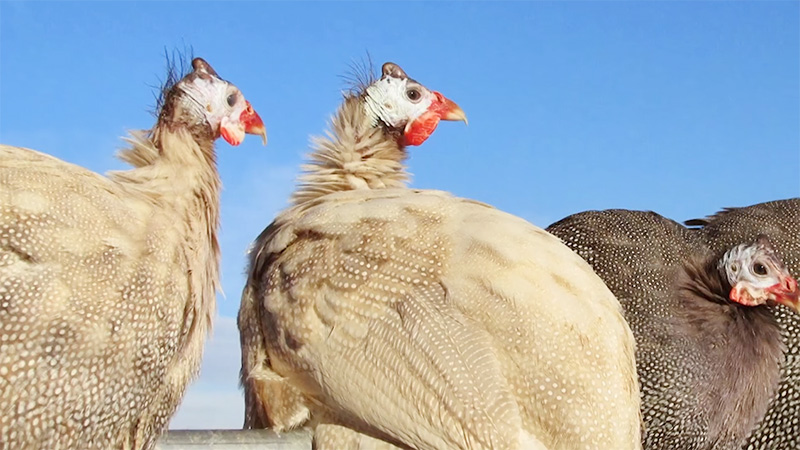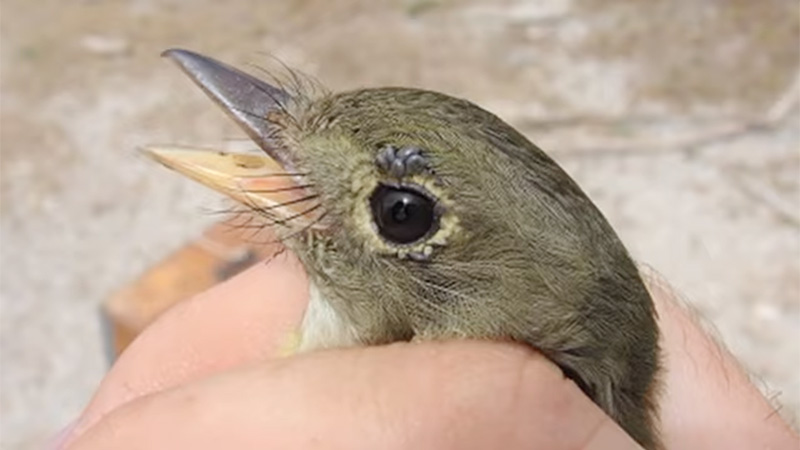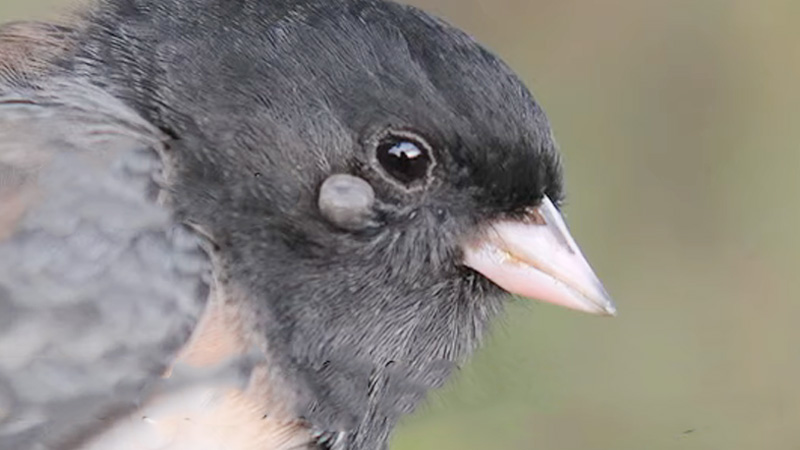Birds, those enchanting creatures that grace our skies with their aerial ballets and sweet melodies, are not immune to the challenges of nature.
While they soar effortlessly through the air, they, like all living beings, must contend with parasites that can disrupt their lives. One such pesky adversary is the common tick.
In this exploration, we dive into the world of avian parasites, specifically focusing on the often-overlooked question: Do birds get ticks?
Ticks are notorious blood-feeding arachnids that can transmit diseases and cause discomfort to their hosts. But are our feathered friends susceptible to these tiny, yet tenacious, creatures?
Join us on a journey to uncover the fascinating relationship between birds and ticks. We’ll delve into the ecological roles ticks play in avian ecosystems, the potential health implications for birds, and how they’ve adapted to manage these bloodsucking foes.
From songbirds to raptors, our avian companions may have more in common with us than we think when it comes to dealing with these tiny parasites.

Do Birds Get Ticks?
To answer the question, “Do birds get ticks?” the short answer is yes. Birds, like mammals, are susceptible to ticks. Ticks are ectoparasites that latch onto the external surface of their hosts, seeking a blood meal to fuel their life cycle.
The skin and feathers of birds provide an ideal habitat for ticks to attach and feed. Different bird species exhibit varying degrees of susceptibility to ticks.
Songbirds, which often nest in shrubs and trees, are more exposed to ticks when foraging for insects or navigating through foliage.
Ground-nesting birds, on the other hand, might encounter ticks in their nests, particularly if their nesting sites are near tick-infested habitats. Birds of prey, such as hawks and eagles, can also fall victim to ticks, especially when they scavenge carrion.
Which Birds Are More Likely to Spread Ticks?

The likelihood of birds spreading ticks depends on various factors, including the bird species, their behavior, and the habitat they inhabit. Some bird species are more likely to spread ticks due to their behavior and ecological roles. Here are a few considerations:
Ground-Nesting Birds
Birds that nest on the ground are more likely to encounter ticks because they are closer to the habitat where ticks are commonly found. Species like pheasants, quails, and some shorebirds may have higher tick exposure because of their nesting habits.
Songbirds
Many songbirds are known for their extensive foraging in vegetation, which can expose them to ticks lurking in plants. While they may not actively spread ticks, they can pick up ticks while foraging and inadvertently transport them to new locations.
Birds of Prey
Raptors like hawks and eagles can also become hosts for ticks. They might acquire ticks when scavenging on the ground, feeding on carrion, or even during interactions with prey animals that carry ticks.
Migratory Birds
Some bird species are migratory and cover vast distances during their annual migrations. These birds can potentially carry ticks from one region to another, facilitating the spread of ticks and tick-borne diseases.
It’s important to note that while birds can carry ticks, they are not typically the primary hosts for most tick species. Ticks usually rely on mammals like deer, rodents, and larger animals for their blood meals. Birds are more likely to be accidental hosts.
The spread of ticks is influenced by various ecological factors, including the presence of suitable hosts (both birds and mammals), vegetation types, and climate conditions.
Tick populations tend to be more established in specific habitats, and their distribution can be influenced by factors like temperature and humidity.
How Do I Know If My Bird Has Ticks?

Detecting ticks on a bird can be challenging, especially because ticks are small and often well-camouflaged by feathers. However, here are some signs and steps to help you determine if your bird has ticks:
Unusual Behavior and Feather Change
Watch for changes in your bird’s behavior. If your bird is constantly scratching, preening excessively, or seems agitated, it could be a sign of tick irritation.
Carefully examine your bird’s feathers, especially in areas where ticks are more likely to attach, such as around the eyes, beak, legs, and under the wings. Ticks may appear as small, dark, or reddish-brown, oval-shaped parasites.
Check the Skin
Gently part your bird’s feathers and inspect the skin underneath. Look for raised bumps or irritated areas. Ticks often attach themselves to the skin.
If your bird is nesting, inspect the nesting material. Ticks can infest nesting material and may be visible there.
Preventative Measures
To prevent tick infestations in the first place, ensure your bird’s living environment is clean and regularly cleaned. Keep their living area dry and free of debris that might attract ticks.
Additionally, providing a healthy diet and proper grooming can help maintain your bird’s overall health and resilience to parasites.
Remember that tick infestations in birds are relatively rare, but it’s still important to be vigilant, especially if your bird spends time outdoors or has contact with other animals that might carry ticks.
If you suspect a tick infestation, consult a veterinarian promptly to ensure the health and well-being of your feathered friend.
How Do You Get Rid of Ticks on Birds?
Getting rid of ticks on birds requires careful and gentle methods to ensure the safety and well-being of your avian companion. Here’s a step-by-step guide on how to remove ticks from birds:
Find a Calm and Quiet Space
Choose a quiet and well-lit area to work with your bird. Minimize stress for your bird during the tick removal process. If you prefer, wear latex gloves to protect your hands during the procedure.
Gently Restrict the Bird and Examine
If your bird is comfortable with handling, gently restrain it by holding it securely but gently. Birds can be fragile, so handle them with care.
Use a magnifying glass if necessary to closely examine the areas where you suspect ticks. Ticks often attach to the skin or feathers around the eyes, beak, legs, and under the wings.
Use Tweezers for Removal
Once you have located a tick, grasp it gently but firmly as close to the skin as possible using fine-tipped tweezers. Be careful not to squeeze the tick’s body, as this may cause it to release more toxins.
With a steady hand, slowly and steadily pull the tick straight out. Do not twist or jerk the tick, as this can cause parts of it to break off and remain embedded in the bird’s skin.
Place the Tick in a Container
After successfully removing the tick, place it in a small container with a lid. This can be important if you need to identify the tick species or if your bird develops any symptoms later.
After tick removal, disinfect the area where the tick was attached with an antiseptic solution. This helps prevent infection.
Monitor Your Bird
Keep a close eye on your bird for any signs of infection or discomfort in the days following tick removal. If you notice any unusual behavior or symptoms, consult a veterinarian.
To prevent future tick infestations, ensure that your bird’s living environment is kept clean and free of debris that might attract ticks. Regularly clean the bird’s enclosure and provide proper grooming to maintain its overall health.
Consult a Veterinarian
If you have difficulty removing a tick or if you are unsure about the identification of the tick species, it’s advisable to consult a veterinarian who specializes in avian care. They can provide professional guidance and ensure that your bird receives appropriate care.
Remember that tick infestations in birds are relatively rare, but prompt and proper removal is crucial to prevent potential complications. Always prioritize the well-being of your bird and seek professional advice if needed.
FAQs
Can I use over-the-counter tick removal tools for birds?
It’s best to consult a veterinarian for tick removal from birds. While there are over-the-counter tick removal tools available, using them on birds can be tricky due to their delicate skin and feathers. Veterinarians have the expertise and tools needed for safe tick removal.
What should I do if I can’t remove a tick from my bird?
If you’re having difficulty removing a tick or if you’re unsure about the procedure, it’s important to seek professional help from an avian veterinarian. Attempting to force a tick out can lead to injury or infection.
How can I prevent tick infestations in my pet bird’s environment?
Preventing tick infestations in your bird’s environment involves maintaining cleanliness. Regularly clean the bird’s enclosure, remove debris, and keep the surroundings tidy. Additionally, you can provide proper grooming to keep your bird’s feathers in good condition.
Can birds get diseases from ticks?
Yes, some tick species can transmit diseases to birds. Ticks can carry pathogens that may lead to diseases in both birds and humans. If you suspect a tick infestation or if your bird shows signs of illness after tick removal, consult a veterinarian.
Are there bird-safe tick repellents or treatments?
Tick repellents and treatments for birds should be prescribed and administered by a veterinarian. Self-administered tick treatments can be harmful to birds if not used correctly. Always consult a professional for guidance on tick prevention and control for your pet bird.
Conclusion
The question of whether birds get ticks is not merely a matter of curiosity; it sheds light on the intricate web of interactions within nature. While birds are indeed susceptible to ticks, the extent of this susceptibility varies among species.
Ticks can impact avian populations by causing discomfort, potentially transmitting diseases, and even affecting their reproductive success.
However, birds have not remained passive victims in this relationship. Over countless generations, they have evolved remarkable adaptations to combat ticks, including preening behaviors and nesting strategies that minimize infestations.
These adaptations demonstrate the resilience and resourcefulness of our avian friends in the face of adversity.
Understanding the dynamics between birds and ticks not only deepens our appreciation for the natural world but also underscores the importance of preserving diverse ecosystems.
As we continue to unravel the mysteries of these tiny parasites in the context of avian life, we gain valuable insights into the intricate balance of nature that shapes our planet.
Meta: